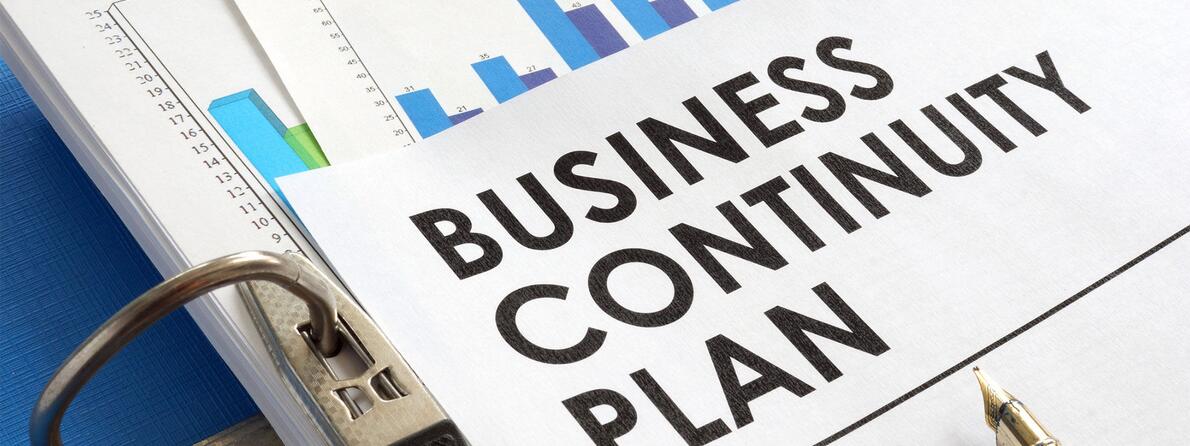There are many uncertainties in business and the more a business begins to grow, the more there is an increase in the number of uncertainties which could be expanding to a new geographical location, promoting team members to handle more challenging tasks, engaging in the production of a new line of products or seeking partnerships to strengthen the market share.
Read more about Business
All these uncertainties are risk factors associated with businesses. The ability of the business owner to ensure the business can continue its operations in spite of the numerous risks at any point in time could determine whether a business would go bankrupt or evolve from the unforeseen instances.
What Is the Business Continuity Plan?
A business continuity plan is a document that outlines what actions or measures should be taken should there be a disruption in the form of an associated risk such as fire outbreak, loss of equipment, death of the business owner or a collapsed building.
The ability to get back into business despite the disruption is key as customers will continue to demand the products and services being offered and the inability to meet these demands would lead to a huge loss in market share and more efforts to win them back if it takes a longer time for the business to get back on its feet.
A business continuity plan is significant in the following ways:
- Availability and Accessibility: A business is sustained and can continue to offer its products and services most especially if they depend on the use of Information Technology (IT) infrastructures such as cloud computing that helps to save and backup all documents online in real-time such as receipts, invoices, purchase orders, bank transactions, log sheets of staff etc. and most especially ability to access documents that can aid the functioning of the human resources, suppliers, procurement, operations and all the different aspects that contributes most to the direct impact the business makes to all stakeholders.
- Uninterrupted operations: The systems that govern the smooth operations of a business and the easier they can be installed immediately after the disruption ensures that operations can continue seamlessly.
- Disaster recovery: A secondary source of ensuring a business can sustain itself back into operations is key when it comes to disaster recovery and its management. Disaster recovery could be the ability to get back from where everything stopped. A website that has experienced cyber-attack and is the major source of engaging customers should have a sub-domain being hosted separately so that getting back live aids the recovery process and minimizes loss.
Sign up to the Connect Nigeria daily newsletter
Processes For Designing Business Continuity Plan
While planning to have a holistic document for the business continuity plan, the following metrics are important to ensure a robust design is carried out:
- Business Prioritization: The starting point for planning a business continuity plan is to identify and quantify the risks, threats and vulnerabilities. This should be done across all platforms and departments.
- Adoption Into IT: Take the input from business prioritization and perform an overall business continuity program design. Information Technology gives a competitive advantage when it comes to risk management as it provides the infrastructure to safeguard and ensure easy recovery and accessibility to files saved with the aid of cloud computing. The risks identified from the business prioritization should be adopted into workable IT systems
- Manage: The ability to begin to utilize what has been designed prior to a gap caused by a breach requires discipline to enhance building the capacity of the team to utilize the systems designed effectively by updating files regularly on a routine basis.
The key components of business continuity are:
Strategy: Strategy helps to create a secondary system in place while ensuring that the day-to-day operation runs smoothly.
Organization: Objects that are related to the structure, skills, communications and responsibilities of its employees. Organization of the key components of the internal and external resources that keeps the system running, most especially the human resources, their responsibilities and opportunity to communicate output through a regular assessment of all systems ensures organization of the overall plan for business continuity.
Software applications and management: Any Software applications that are used regularly used for business operations, a backup of the software for possible set-up and availability for its implementation.
Processes: Documentation of all processes with specific terms in the form of a flow chart or process map, such that any team member can begin to deploy the knowledge from the files without needing a third party to make explanations.
Technology: Every form of technology that supports the overall existence of the business, such as the infrastructures for production, maintenance, repairs, use of energy etc should be documented.
A business continuity plan is important because it becomes a reference point should any form of disaster occur and helps to provide the framework for recovery to deal with different forms of risk and the ability to return to operating again.
Featured Image Source: ISG
Got a suggestion? Contact us: [email protected]


